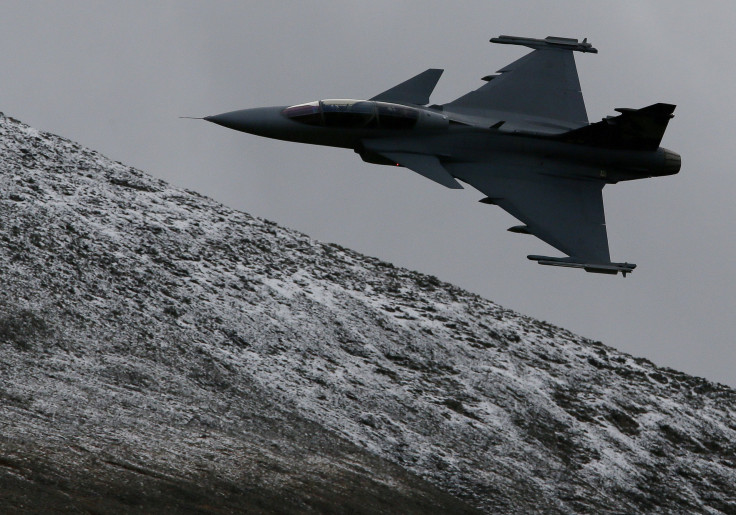President Dilma Rousseff Announces Brazil Is Buying Sweden's Saab Gripen Jet Fighters

After a decade of discussion, Brazil’s President Dilma Rousseff announced Wednesday the acquisition of 36 Gripen NG fighter jets, from Sweden’s Saab (STO:SAAB-B), for the FX-2 program of the Brazilian Air Force.
Defense Minister Celso Amorim and Gen. Juniti Saito, the air force's chief of staff, said at a press conference after the official announcement that the planes will be delivered in 4 years. The total cost of the deal will be $4.5 billion.
"The choice took into account performance, technology transfer and cost, not only for acquisition but also for maintenance. The decision was based on the best balance of those factors," Amorim said.
The decision puts an end to 10 years of speculation and delays on the transaction, which started as a plan under former President Luiz Inácio (Lula) da Silva. Three contenders stepped up to the bid: France’s Dassault (EPA:AM), with the Rafale model; Boeing Co. (NYSE:BA), with the F/A-18 e/F Super Hornet; and the eventual winners, with the smaller Gripen. In the early stages of the negotiation, Lula expressed preference for the Rafale, but the French contender fell out of favor at the end of Lula's second and last term in 2010, and was finally rejected on Tuesday due to its high cost.
Boeing was considered the stronger bid, but following the revelation that the U.S. National Security Agency had been spying on Brazilian officials and companies, including on the president herself, the relationship between Brazil and the U.S. frayed. Rousseff even canceled a visit to the White House, scheduled for September, as a show of protest.
Therefore, Gripen, which was initially criticized for its smaller size and for not being tested enough in combat, ended up getting the order. The 36 planes were offered initially for $6 billion, but Brazilian officials bargained the price down significantly. It is not unusual for military plane deals this large to close at a significantly lower price than first proposed.
According to a study by defense publishing group Jane’s, the Gripen has the lowest operational cost of any Western fighter jet currently for sale, at $4,700 per hour compared to $11,000 for the Boeing F/A-18 and $16,500 for the Dassault Rafale. According to figures previously reported in the Brazilian press, the overall deal offered by the French was around $10 billion including maintenance, while Boeing proposed $7.5 billion.
The Gripen is, however, smaller than either the Boeing or Dassault jets, with one engine instead of two. It can carry a maximum load of five metric tons of weapons compared with about nine for the Rafale and eight for the F/A-18. Compared to its two rivals, the Gripen is closer to the Dassault Mirage 2000, the fighter it would replace, which is also a single-engine jet with broadly similar characteristics. The Rafale and F/A-18 would have been a major upgrade for the Brazilian Air Force in size and complexity.
The Brazilian order is the biggest export success to date for the Gripen. Saab has sold most of the roughly 200 Gripens in service today to its home customer, the Swedish Air Force. South Africa has bought 26 and Thailand 18. Switzerland has also bought 22 of the same advanced version, the Gripen E, that Brazil has selected, but that purchase is still subject to the possibility of being blocked by a public referendum next year.
The Czech Republic and Hungary also operate the Gripen, but have not actually bought the aircraft; they are leasing some airplanes from the Swedes.
While the Swedish victory is a setback for Dassault and Boeing, the French company won the biggest competition for fighter jets in recent years, when the Rafale got a contract potentially worth up to $20 billion from the Indian Air Force in 2012. The Indians are buying 126 Rafales plus options for more. The only other operator of the Rafale is France. The jet was combat-tested successfully in 2011 in the Libyan campaign, while the Gripen has never flown in actual combat.
As for Boeing's F/A-18, it's the mainstay of the U.S. Navy, which has around 500 in service out of 565 it has ordered. Australia is the only export customer, with 24. The airplane has taken part successfully in all the conflicts the U.S. has been in since the Super Hornet entered service in 2001.
© Copyright IBTimes 2024. All rights reserved.





















